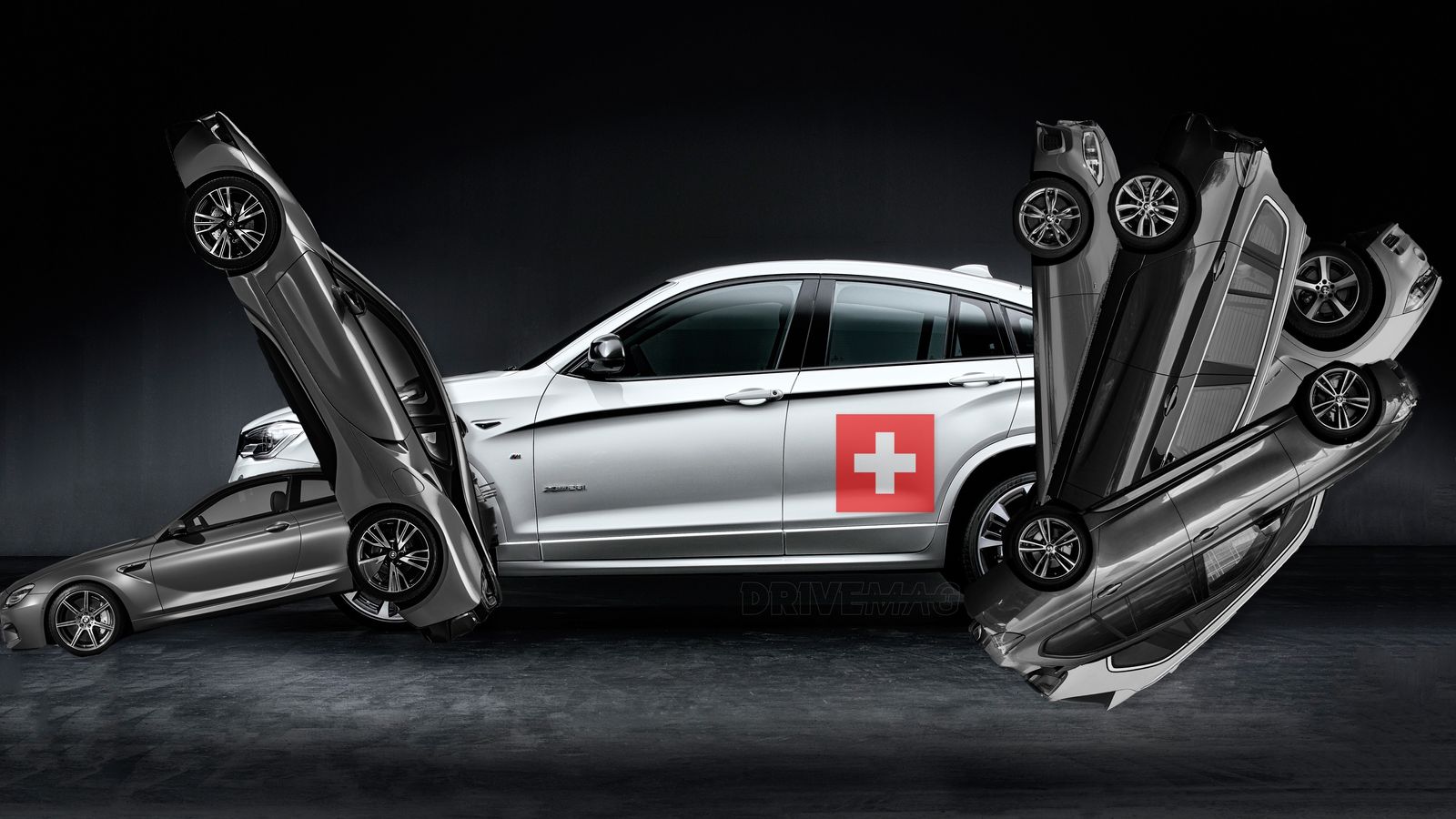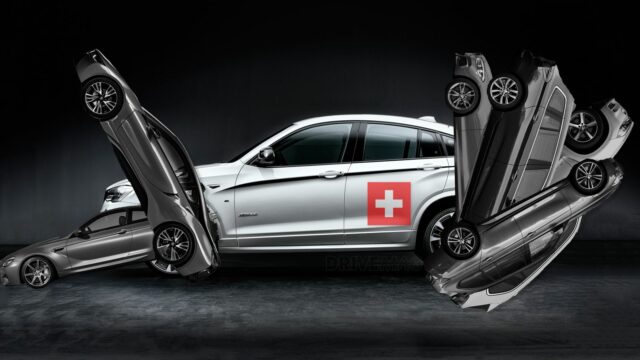And why I think they are a fire we need to stop feeding…

It seems the age of the sedan, wagon, hatchback and coupe as different cars has ended or is on the brink of collapse. Now all of the above (and more) have melded into a handful of ‘valid’ and ‘appealing’ body styles, in an unprecedented move for the automotive industry, an industry whose medium and long term future can’t really be predicted – those who say they can are either fooling you, fooling themselves or are the captains of industry at the helm of it all.
Will we go for battery powered all-electric vehicles? Will we go down the hydrogen route? Will we find renewable fuels to burn in our Otto and Diesel engines? Will we take to the sky and ditch roads altogether? Will there be a need for personal transportation as the near future will keep migrating towards driverless vehicles?
It’s questions like these that all added up mean we’re living in interesting times. And by interesting I mean different to anything that’s been seen before in the industry. Ever since standardization (and planned obsolescence) became widespread, around the 1930s, the industry has stayed quite constant and predictable, with the biggest changes it noted being incremental, predictable and usually superficial.
Over the last decade, however, we have more vividly faced the prospect of oil running out someday (maybe within the next century, although it’s not really easy or wise to speculate on such matters) and so we’re scrambling to find solutions to keep ourselves going on something other than decayed dinosaurs. We’re now trying out cars with hefty battery packs and limited range, expensive hydrogen fuel cell vehicles that are… well… expensive, as well as that not-at-all-ideal middle-of-the-road solution with a clear best-before date: hybrids.
The fact that we accept contrived hybrids as normal is telling and may also have something to do with what people want from a car nowadays. The hybrid mentality is reflected in cars’ styling and functionality as well, and we find it perfectly normal to expect a car to do everything these days: from being a mobile phone booth and internet hotspot to keep driving itself on the highway and keep you safe; oh, and also being a fashion accessory and status symbol, although these notions have been around for much more than a decade, it’s just they’ve only recently become completely mainstream – now, even small, inexpensive city cars can be seen as statements.
All manufacturers are reporting dwindling sales for models that not so long ago made up the core of their range. Now it’s all about the styling, the raised ground clearance and driving position, plus the obligatory A+++ energy efficiency sticker attesting to how little damage it does to penguin colonies in Antarctica. Everybody wants a piece of that even if the vehicle they’re buying is a big, cumbersome and not-at-all-efficient one.
People gawped when BMW launched the hunchback X6, a car whose design could easily be described using foul language and invectives… It was a massive success and now you can get a second-gen X6M (full Motorsport model) and X6 hybrid, there’s also a smaller one called X4 and Mercedes has also copied the formula. I think the X6 represents all that’s bad about where the automotive industry is going, as it’s an SUV that can’t go off-road or properly carry people, a coupe that is only sporty if all you’ve ever driven is a tractor, a hatchback that’s not all that practical and a styling exercise that even in its less offensive second incarnation still makes me cringe.
It’s like manufacturers are feeding off buyers’ confusion and fueling it at the same time so as to just use modular platforms and offer basically one vehicle in a wide array of flavors (i.e. spending less to make more). I mean the idea of selling, say, a raised hatchback with plastic body cladding at a premium is so daft yet it works because the people doing the buying don’t make informed decisions and eat up the marketing nonsense provided by the manufacturers.
“Yes, the raised driving position will make you feel safer,” but that’s only until all cars on the road will have it. And make no mistake, in one or two decades’ time, all you’re going to see on the road will be crossovers, as we make our way to the proverbial autonomous pod with no steering wheel. So once all cars get the higher driving position, and it becomes the norm, what will the selling point be? Safety? Please.
What about thinking right now about the safety of those not choosing to “feel safe” in a tall crossover or SUV and whose automotive point of view is more conservative. And I’m using “conservative” here with the best possible connotation, as I think there’s still a place for non-crossovers on the roads of the future. You can’t justify buying a taller vehicle if all the off-roading you’ve ever done by yourself involved clambering onto a curb in the city, or that one time you made a wrong turn and ended up on a rutted, muddy track where you got stuck.
When you’re driving an SUV-like vehicle, you are more of a safety hazard on the road, where you’ll be spending 99.99 percent of your time driving. These cars are taller therefore less stable during cornering, they have poorer braking performance, they undoubtedly use more fuel, they make any crash with a non SUV-like vehicle very perilous for the other party involved and they… well, they’re a feminine buy and nowhere nearly as macho as you though they were. That’s fine if you’re a lass, but not so if you’re a bloke, or is this too old fashioned a statement to still be passable today?
Although, come to think of it, maybe this boom in SUV-like vehicle sales has something to do with women now holding the car-buying reins in the family, and the extra emphasis they put on apparent safety. A study published some two years ago suggested that women now make up more than half of the car-buying public, while their influence extends to around 80 percent of all car purchases. The study focused on the US, but it’s not much different in all developed or developing markets around the world.
People buying these taller cars are not to blame, as they think they’re making the correct choice and in doing so protecting their families and themselves. But at what cost?
The manufacturers themselves are not evil as they are simply playing the game of capitalism (very well). However, it seems the idea of progress in the industry has taken a back seat to pure profit margins and it all wreaks of complacency.
The bottom line of this rambling rant has to do with the need to take as many steps back as necessary and see what we’ve achieved so far, what was good and what was bad. We need to realize there’s two sides to every coin, i.e. sitting taller in a car and having more metal around you results in poorer handling which means you’re more likely to crash than in something smaller and more sensible.
It is my firm belief that we should not keep buying these ridiculous raised cars and realize that this is nothing more than a fad. We don’t need the higher driving position, we don’t need the extra heft and we certainly don’t need any more SUV coupes with more styling than substance.
What I think we need is a more down to earth approach, concentrating on making cars not crash in the first place, making them as small and light as we can, resorting to simpler styling that isn’t all about aggression (as the best looking ones often had cute not frowned faces) and focusing on using less fuel while we still have some left.
Regarding powertrains, there’s still a lot left to do to make internal combustion engines better. Adding batteries and an extra electric motor to save fuel is so contrived it’s pointless to even try to deconstruct it. Stuff like variable compression ratios, engines that are less picky with the fuel they run on are valid paths, but whichever way we go, and however we will choose to power our future vehicles, there is no point to make them tall to make people “feel safe” or style them for style’s sake or add gadgets to draw attention away from engineering corners cut.
We need to show maturity, realize which car-buying habits are superficial and renounce them. We should strive to be more informed, more aware, less prone to falling for marketing, more apt to think for ourselves. We need to sharpen our critical thinking, be our own investigative journalists with the issues that concern us, even if said issue is something as trivial as buying a car.
